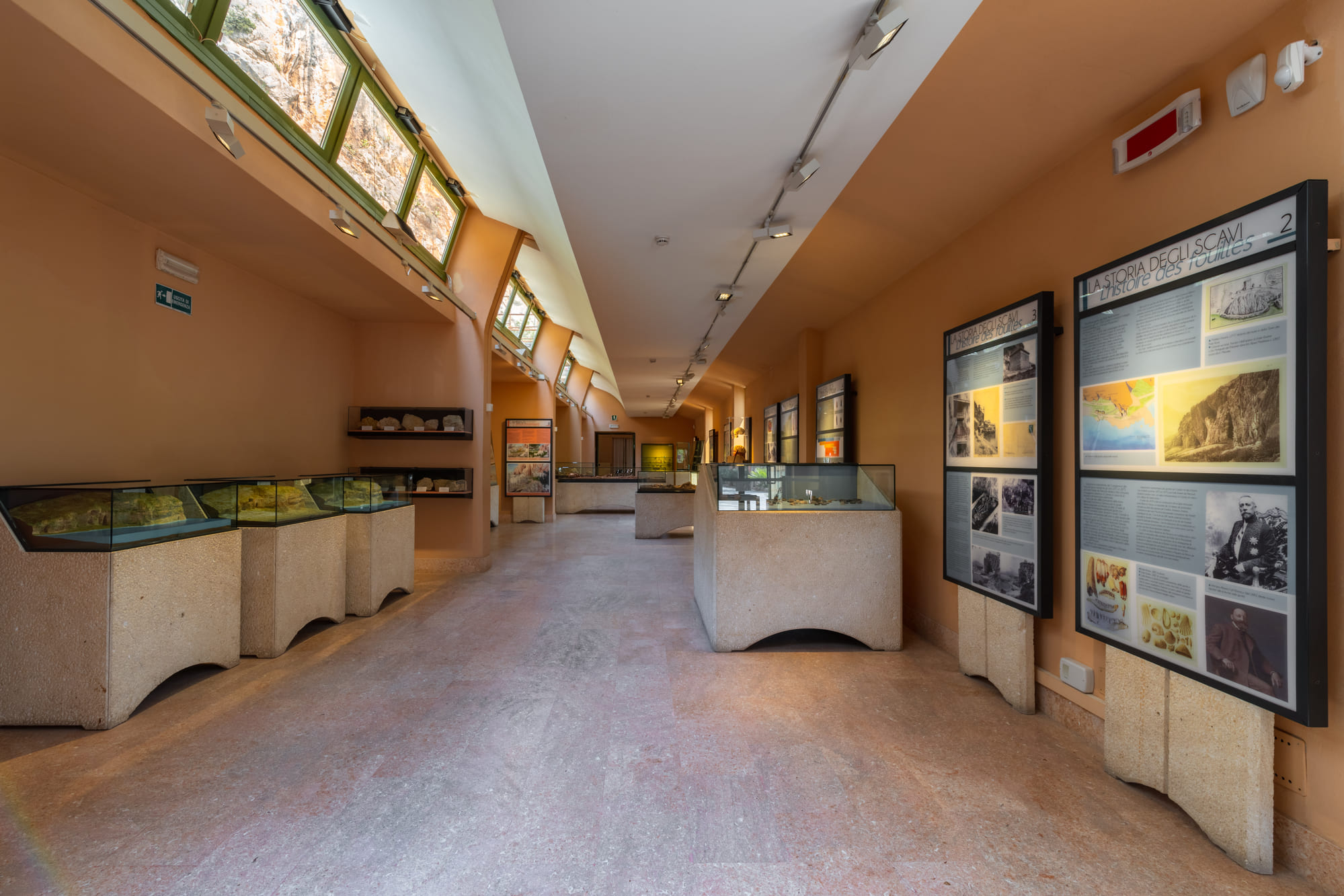In the footsteps
of history
Discovering the origins of mankind
Balzi Rossi – A name that recalls one of the most evocative beaches on the coast, but above all, that tells us about the life of man 25,000 years ago.
The Balzi Rossi Caves are one of the most emblematic places in human history in Europe. They open at the foot of a majestic rock face of Jurassic dolomitic limestone. They are divided into two groups by the railway line: The Conte Costantini cave, the Fanciulli cave, the Florestano cave and the Caviglione cave are located north of the railway, while the Barma Grande and the Barma du Bausu da Ture (unfortunately destroyed by quarrying) are located to the south. Finally, the Prince’s cave completes this extraordinary underground complex.
The caves
The Balzi Rossi Caves, directly overlooking the sea, narrate through their complex stratigraphy the alternation of climatic phases with fauna and shells of the hot and cold periods. This extraordinary underground complex has yielded findings from the ancient Paleolithic to the most recent prehistory, such as numerous burials. Among the finds collected, the pelvis fragment of a Heidelbergensis-type woman testifies to human migrations from Africa starting around 200,000 years ago. The Caves also revealed numerous female figurines, the so-called Venuses, some of which are now kept in the Musée des Antiquités Nationales in Paris.
The museum
The Balzi Rossi national museum, designed by Thomas Hanbury in 1898 and completely set up in 1994, celebrates the importance of this archaeological site. Inside, extraordinary finds narrate the daily life of prehistoric men, including tools such as blades and arrowheads, icons, and small statues. One of the main attractions is the famous Paleolithic triple burial from 25,000 years ago: An adult Homo sapiens and two young men buried together. The grave goods include long French flint blades, perforated sea shells, fish vertebrae, deer canines, and worked bone pendants.
Opening hours and visiting options
Tuesday to Sunday, 8:30 AM to 7:30 PM
Free entry on the first Sunday of the month.
The Caviglione Cave can be visited with a timetable:
-
- 11:00 – 12.00
- 15.00-16.00
(closed in case of wind or bad weather)
Fun Fact
The Caviglione Cave guards an exceptional testimony: The horse engraving, discovered in 1971, one of the rare examples in Italy of Paleolithic rock art.

